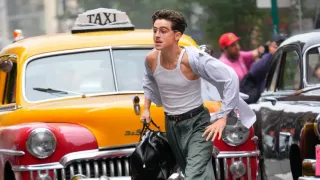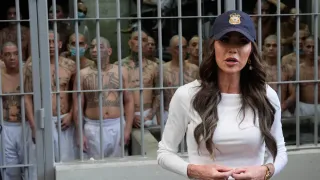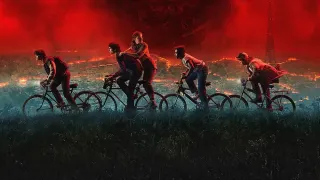February 23, 2015
"Frozen" Niagara Falls Draws Tourists
Matthew Wexler READ TIME: 2 MIN.
An icy Niagara Falls drew a small but hardy stream of tourists Friday intent on witnessing the extraordinary crystalline spectacle, if only long enough to click some photos.
Weeks of sustained cold had visitors marveling from behind scarves and viewfinders at the waterfalls' glacial buildup and mist-encased trees and lampposts that looked as though they had been sculpted from snow.
"I come here every winter but this is the most magnificent," said Heather Ferrara of nearby Tonawanda, who, with her husband, Joe, braved a morning temperature of minus 7 that felt even colder near the roiling shore.
At Prospect Point, the brink of the American Falls faded in and out of a fog as if the falls were exhaling in the cold.
"The mist is more ice pellets," said Tony Lombardi of Mylan, Ohio, who shed his gloves to take photos while his wife, Amy, warmed up in their van. The Mylan, Ohio, couple decided to celebrate their 22nd anniversary at Niagara Falls after seeing the display on television.
It's a must-see, Lombardi said, squinting against the stinging spray, "in short bursts, for sure."
Although sections of the three waterfalls that make up the natural attraction appear to have frozen in place, the Niagara River continues to flow over the precipice to the Arctic-like buildup below. The scene has become a tourist magnet for the second straight year after several relatively mild winters.
"It takes on a whole different atmosphere," said Heather Maitland-Schmidt of North Tonawanda, who aimed a camera at an ice-encrusted bridge that would have fit in Disney's "Frozen" movie. "It's a winter wonderland."
Forecasters say there will be plenty of time to witness the sight, with nothing resembling a warmup on the horizon.
"If you can, you have to see this," Joe Ferrara said as he and his wife headed back to their car.
"But dress warm!" Heather Ferrara warned.
The couple wasn't done with nature yet. They were headed to Letchworth State Park, about 80 miles away in Castile, to take in a 50-foot high "ice volcano" that has formed around a geyser.






